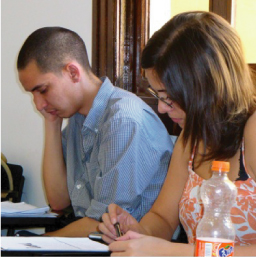Mexico City
Mexico
Mexico City is the largest and richest city in Latin America. Its influence in media, culture, fashion, finance, and architecture is outstanding to the point that some of its landmarks are well-known around the world. Its greatness started since its foundation by the Aztecs to be the capital of their empire. Conquistador Hernán Cortés destroyed it and rebuilt it as Spanish. The city then would go on to be the capital of the Viceroyalty of New Spain, the two Mexican Empires, and eventually, modern-day Mexico. During that time the city developed a unique display of buildings, traditions, and gastronomy.
Today, Mexico City is a multicultural megalopolis home to over 21 million people where the pre-Columbian and modern worlds still coexist in a colorful and rich cultural display. For example, Aztec traditions coexist with the pilgrimage to Catholicism’s holiest place in the Americas, the Basilica de Guadalupe, and with corporate magnates directing multinationals along the Paseo de la Reforma. This juxtaposition is also what makes visiting Mexico City such an exhilarating experience. And, truth be told, it would be hardly impossible to run out of things to do.
Why learn Spanish in Mexico City?
Largest Spanish-speaking city in the world.
History and art lovers will never, ever run out of things to do and see as Mexico City is the city with the largest number of museums in the world.
The city has the busiest airport in Latin America, with connections around the world as well as to every corner of the country.
Biggest financial and business center of Latin America.

Language Schools in Mexico City:

International House Mexico City – Condesa, member of one of the most prestigious worldwide networks of schools, it offers intensive courses in the trendy and centrally located neighborhood of Condesa.
Travel
tips
When
Best time to go is March to April and September to November.
FYI
Mexico City is an amazing destination year around but be aware that the city is located in a geologically active zone, and that days of heavy smog are relatively common particularly when it’s dry.
Meet
Frida Kahlo, the ubiquitous artist turned pop-culture icon, lived and died in her house, Casa Azul museum, in the Coyoacán neighborhood.
Head over to Paseo de la Reforma to see the City’s most cherished symbol: The Angel of Independence.
See
The imposing Zócalo Square and the surrounding buildings are an absolute must-see to understand Mexico’s past and present through some of the best colonial architectural ensembles in the world.
Museums are both architectural masterpieces and guardians of some of the best art in the world, including the outstanding National Museum of Anthropology.
Escape the city, but not it’s colorful culture by visiting the suburb of Xochimilco, to see a network of canals, floating islands and trajineras (especially decorated boats) boasting with mariachis and taquerias for a true Mexican experience.
Do
The celebrations for Independence Day, September 15th, are met with an impressively colorful display of patriotism and party. If you make it through the day, join in for the military parade the following day.
If there is one Mexican cultural expression that has gone mainstream in the world, that is definitely Día de Muertos, on November 1st. Do not miss the markets on the days leading to the date and definitely go to a cemetery!
Attend a soccer match at the iconic Estadio Azteca and experience Mexico’ soccer craze up-close.
Eat
Foodies will never go hungry in Mexico City and the city offers the very famous tacos (in different varieties), burritos or tortas everywhere, from street stalls to trendy restaurants.
Buy
Mexico City has dozens of traditional and massive markets, some of them dating back to pre-Columbian times. The largest and best-known are Tepito and La Merced.